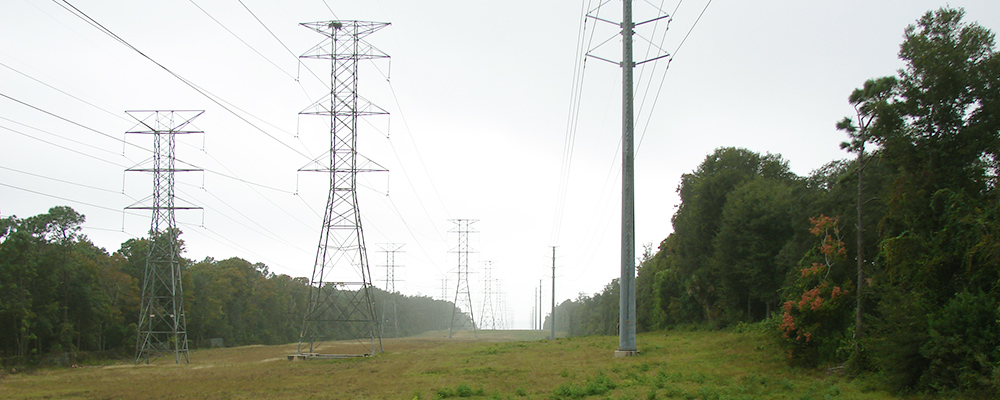Tree Free Zones in Jacksonville
On August 14, 2003, more than 50 million people in the Midwest and Northeast, and in parts of Canada, lost power. This historic blackout caused significant interruptions to commerce, communications, water/sewer services, transportation, and other critical services. The cause was distressingly simple: a tree growing too close to a transmission line.
Since then, the Federal Energy Regulatory Commission (FERC) has required all electric utilities with transmission lines to develop, implement, and comply with something called a Transmission Vegetation Management Procedure.

The procedure requires the defined clearance from transmission lines take into consideration:
- Distance from the conductor to the ground
- Conductor Voltage
- Distance between structures
- Conductor sag at full load
- Conductor sway with the wind
- Tree height and growth rate
Maintaining a Low-Growing Ecosystem Around Transmission Lines
At JEA, once we have established a clear transmission right-of-way, we need to keep it clear of taller-growing trees and plants. Only plants, shrubs or trees whose height at maturity is 8 feet are allowed to grow in the Transmission rights-of-way.
Mowing and cutting alone is not enough because taller-growing vegetation will simply re-sprout. So, we inspect our rights-of-way several times a year in order to treat re-growth or other incompatible vegetation.
Our goal is not to remove or prevent all plant life from flourishing, but to develop and encourage low-growing vegetation similar to a meadow. This way, wildlife indigenous to our area such as birds, small mammals and reptiles can prosper in a field-like habitat.
Contact JEA's Arborists and Foresters
Explore Solutions and Save
Learn about all the ways JEA helps Northeast Florida families, businesses and our community thrive and how we can help you do more.
Related Links
-
Conserve Energy by Planting Trees
Planting the right tree in the right place is one of the best ways to minimize tree trimming in your neighborhood. You’ll also provide trouble-free beauty for years to come, reduce fire hazards, increase your property value and help beautify the community.
-
Call Before You Dig
Florida law requires anyone digging for landscaping or construction, whether you’re planning to dig yourself or hiring a professional, to call 811 before digging.
-
Tree Damage and Debris Removal
JEA makes a continual effort to limit potential damage to power lines from trees with our routine tree maintenance plan. We hire professional trimming contractors who use proper arboricultural pruning methods to keep the tree growth within acceptable limits.